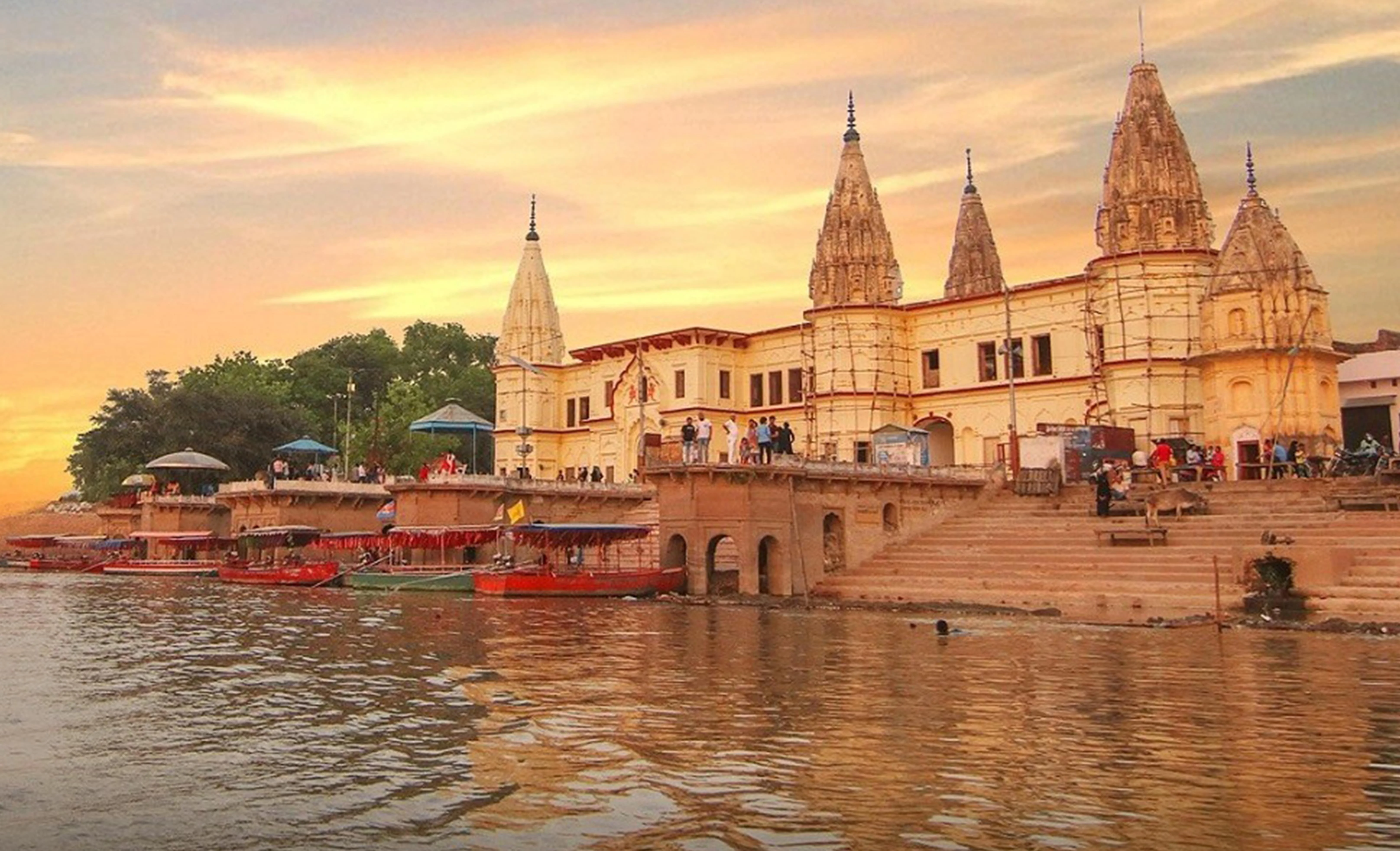
Guptar Ghat
Guptar Ghat, situated on the banks of the Sarayu River in Ayodhya, India, is a sacred pilgrimage site with deep historical and spiritual significance. Its name, "Guptar," translates to "hidden" or "secret," alluding to the mythical and historical secrets enshrined within its waters and surroundings. The ghat holds profound importance in Hindu mythology, particularly associated with Lord Rama, the seventh avatar of the god Vishnu, and his consort Sita. According to ancient texts and oral traditions, Guptar Ghat is believed to be the spot where Lord Rama took jal samadhi (immersed himself in the waters) before leaving his mortal form at the end of his earthly life. This event, known as "Rama's disappearance" (Rama Antya-kriya), marks a pivotal moment in Hindu mythology, symbolizing the culmination of Rama's divine mission and his return to the spiritual realm.
The ghat itself is adorned with ancient temples and shrines dedicated to Lord Rama and other deities associated with his life and deeds. The most prominent among these is the Guptar Ghat Temple, which houses a sacred shrine where devotees offer prayers and perform rituals in reverence to Lord Rama's memory. The temple's architecture reflects traditional North Indian style, characterized by ornate carvings, intricate designs, and vibrant paintings depicting scenes from the Ramayana, the epic saga of Lord Rama's life and adventures.
- Guptar Ghat serves as a site of spiritual purification and redemption where pilgrims bathe in the holy waters of the Sarayu River, believed to cleanse sins and grant spiritual merit leading to liberation (moksha).
- The ghat's serene ambiance and picturesque surroundings provide a tranquil setting ideal for introspection, meditation, and contemplation, offering visitors solace amidst the flowing waters and verdant landscapes.
- Throughout history, Guptar Ghat has witnessed Ayodhya's cultural and religious tapestry, enduring invasions and political upheavals while remaining a steadfast symbol of faith and devotion for Hindus worldwide.
- Annual festivals at Guptar Ghat, particularly during Ram Navami and other auspicious occasions, attract pilgrims seeking blessings from Lord Rama for prosperity, happiness, and spiritual fulfillment.
- In contemporary times, Guptar Ghat continues to attract spiritual seekers and devotees looking to connect with Lord Rama's divine presence and experience Ayodhya's sacred essence.
- It serves as a reminder of India's rich cultural heritage and religious traditions, offering insight into the spiritual ethos that has shaped the country's spiritual landscape over millennia.
Browse All
- Hanuman Garhi Mandir
- Ram Janmabhoomi
- Kanak Bhawan
- Nageshwarnath Temple
- Sita Ji ki Rasoi
- Swarg Dwar Temple
- Sri Mani Ram Das Chhawni
- Raj Dwar Temple
- Tretanath Mandir
- Guptar Ghat
- Ram ki Paidi
- Military Temple
- Jain Temple
- Sankat Mochan Hanuman Mandir
- Badi Devkali Devi Temple
- Janki Ghat
- Matgajendra Temple
- Shri Kale Ram Temple
- Shri Ram Janki Birla Temple
- Makhauda Dham
- Raja Dashhrath Damadhi